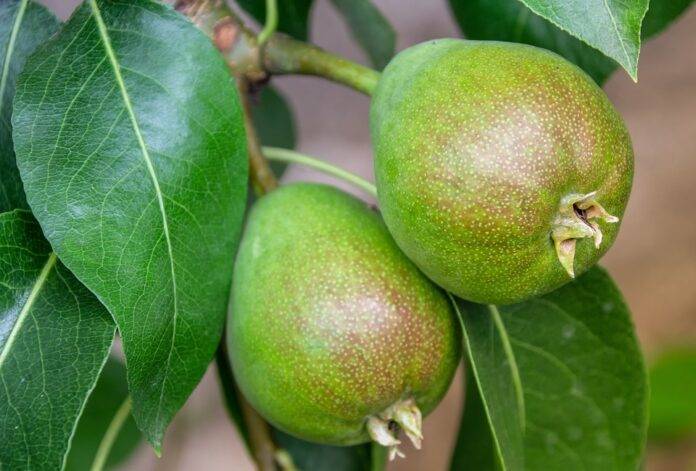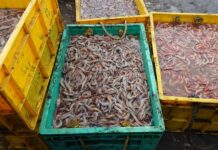Introduction
The cultivation of pears has become increasingly popular in various regions around the world, with pear monocultures being a common practice in the agricultural sector. While pears are a delicious and nutritious fruit, the impact of pear monocultures on soil and water resources has raised concerns among environmentalists, farmers, and policymakers alike. This report delves into the implications of pear monocultures, focusing on soil degradation, water usage, and the overall sustainability of these farming practices.
Pear Monocultures Overview
Pear monoculture refers to the agricultural practice of cultivating a single species of pear tree over a large area. This method is often favored for its economic efficiency and ease of management. However, it can lead to significant ecological consequences. The global pear production volume was approximately 25 million metric tons in 2020, with China being the largest producer, accounting for nearly 70% of the total production. Other key producers include the United States, Italy, and Argentina.
The Impact on Soil Resources
Soil Degradation
Soil health is critical for sustainable agriculture, yet the practice of monoculture can lead to soil degradation. Continuous planting of pear trees in the same location can deplete specific nutrients from the soil, particularly nitrogen and potassium. A study published in the journal “Agriculture, Ecosystems & Environment” noted that monocultures can cause a decline in soil organic matter (SOM), which is vital for maintaining soil structure and fertility.
The loss of SOM in pear monocultures can result in a 30% reduction in soil fertility over a period of 10 years. As the soil becomes less fertile, farmers may resort to the increased application of chemical fertilizers, which can further degrade soil health and lead to a cycle of dependency.
Soil Erosion
Another significant issue related to pear monocultures is soil erosion. The uniform planting of pear trees often leads to a lack of biodiversity in the surrounding ecosystem. This homogeneity can diminish the soil’s natural resilience against erosion caused by wind and water. The USDA Natural Resources Conservation Service estimates that agricultural erosion can result in the loss of 1 to 2 tons of soil per acre per year.
In regions with steep slopes or heavy rainfall, such as parts of California and Italy, the impact of soil erosion can be even more severe. Soil erosion not only affects the topsoil, which is rich in nutrients but can also lead to sedimentation in nearby water bodies, impacting aquatic ecosystems.
The Impact on Water Resources
Water Consumption
Pears require significant amounts of water for optimal growth, with estimates suggesting that it takes around 600 to 800 liters of water to produce one kilogram of pears. In regions where water is scarce, such as parts of Southern Europe and the western United States, the high water demands of pear monocultures pose a serious risk to local water resources.
The concentration of pear trees can lead to over-extraction of groundwater, particularly in areas relying on aquifers for irrigation. For instance, the Central Valley in California, a major agricultural hub, has seen a decline in groundwater levels by approximately 30 feet over the past decade due to extensive agricultural practices, including pear cultivation.
Water Quality
In addition to the quantity of water used, pear monocultures can also impact water quality. The use of chemical fertilizers and pesticides in monoculture farming can lead to runoff into nearby streams, rivers, and lakes. This runoff often contains nitrates and phosphates, which can cause eutrophication—a process that leads to excessive growth of algae in water bodies.
Eutrophication can decrease oxygen levels in the water, leading to dead zones where aquatic life cannot survive. A study by the Environmental Protection Agency (EPA) found that agricultural runoff is responsible for approximately 70% of water quality issues in the United States.
Sustainable Alternatives to Pear Monocultures
To mitigate the negative impacts of pear monocultures on soil and water resources, several sustainable agricultural practices can be adopted.
Diverse Crop Rotation
Implementing diverse crop rotation can significantly improve soil health and reduce the risk of soil degradation. By alternating pears with other crops, farmers can enhance soil fertility and break pest cycles. Research indicates that rotating pears with legumes can improve nitrogen levels in the soil, potentially reducing the need for synthetic fertilizers.
Agroforestry
Agroforestry, which combines agriculture and forestry, can also provide a sustainable alternative to monoculture practices. Integrating pear trees with other tree species can promote biodiversity and improve soil and water conservation. This practice can enhance the resilience of farmland against erosion and improve water retention in the soil.
Cover Cropping
The use of cover crops can be an effective strategy to protect soil health in pear orchards. Cover crops, such as clover or vetch, can be planted in between pear trees to provide ground cover, reducing soil erosion and enhancing organic matter content. Cover crops also improve soil structure and can help retain moisture, thereby benefiting the pear trees.
Conclusion
In conclusion, while pear monocultures are economically advantageous, they carry significant risks for soil and water resources. Soil degradation, erosion, and water overuse are pressing concerns that can lead to long-term ecological damage. Adopting sustainable agricultural practices such as crop rotation, agroforestry, and cover cropping can mitigate these impacts, fostering a more resilient agricultural system.
Farmers, policymakers, and consumers must work together to promote sustainable practices, ensuring the continued availability of pears while protecting vital soil and water resources for future generations. The future of pear cultivation depends on a balanced approach that prioritizes environmental health alongside economic viability.
Read: The Global Pear Industry – A Comprehensive Report




